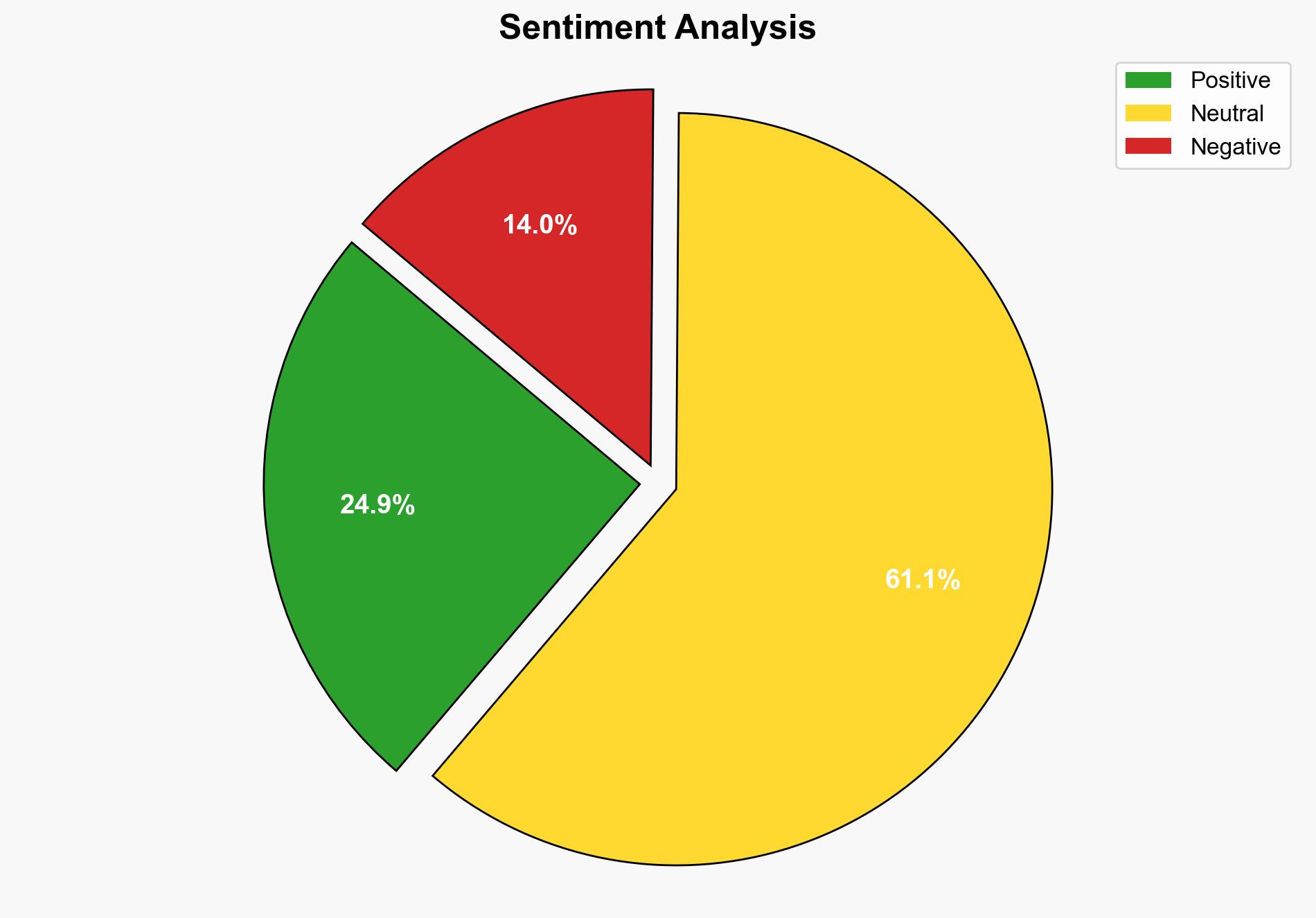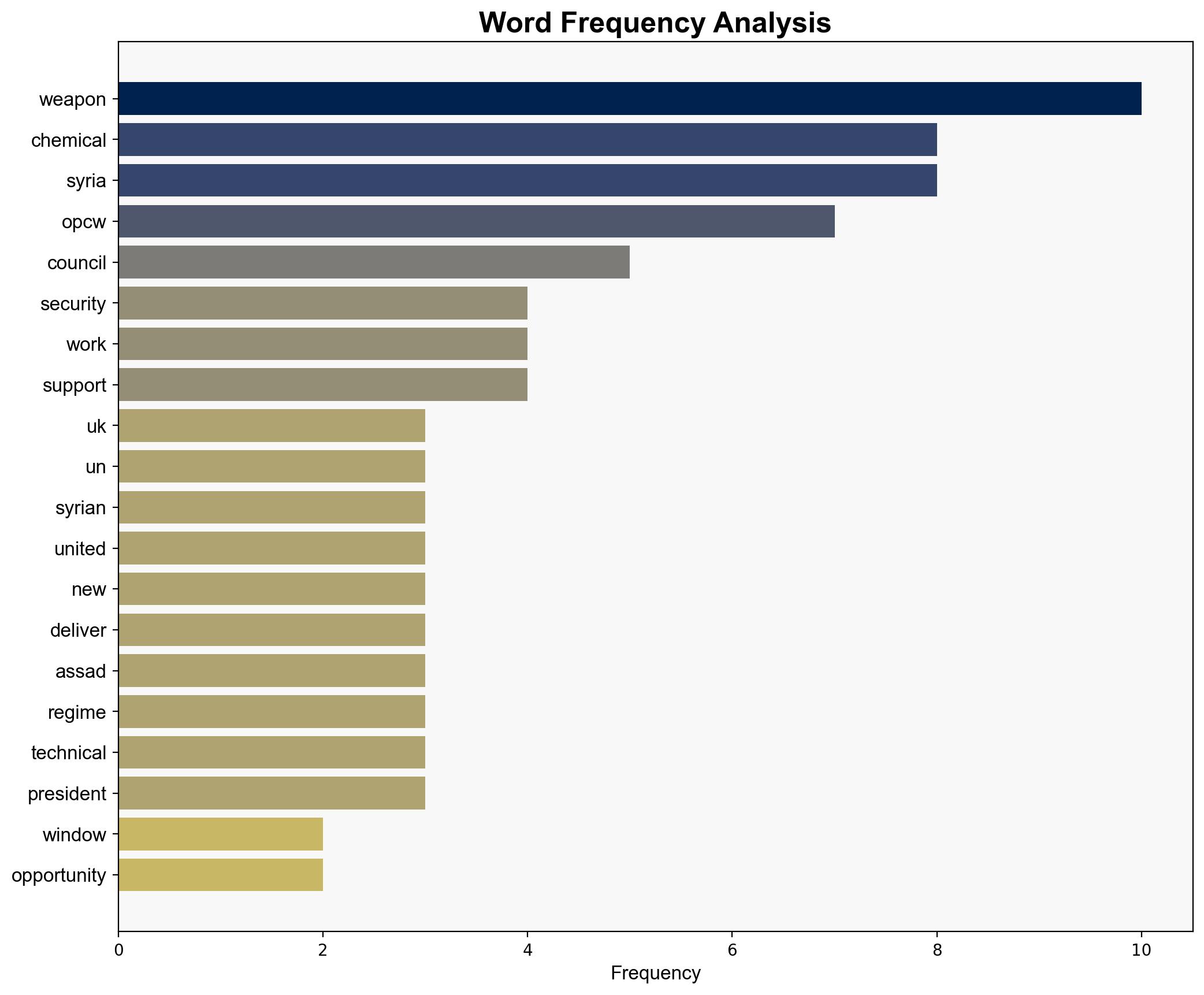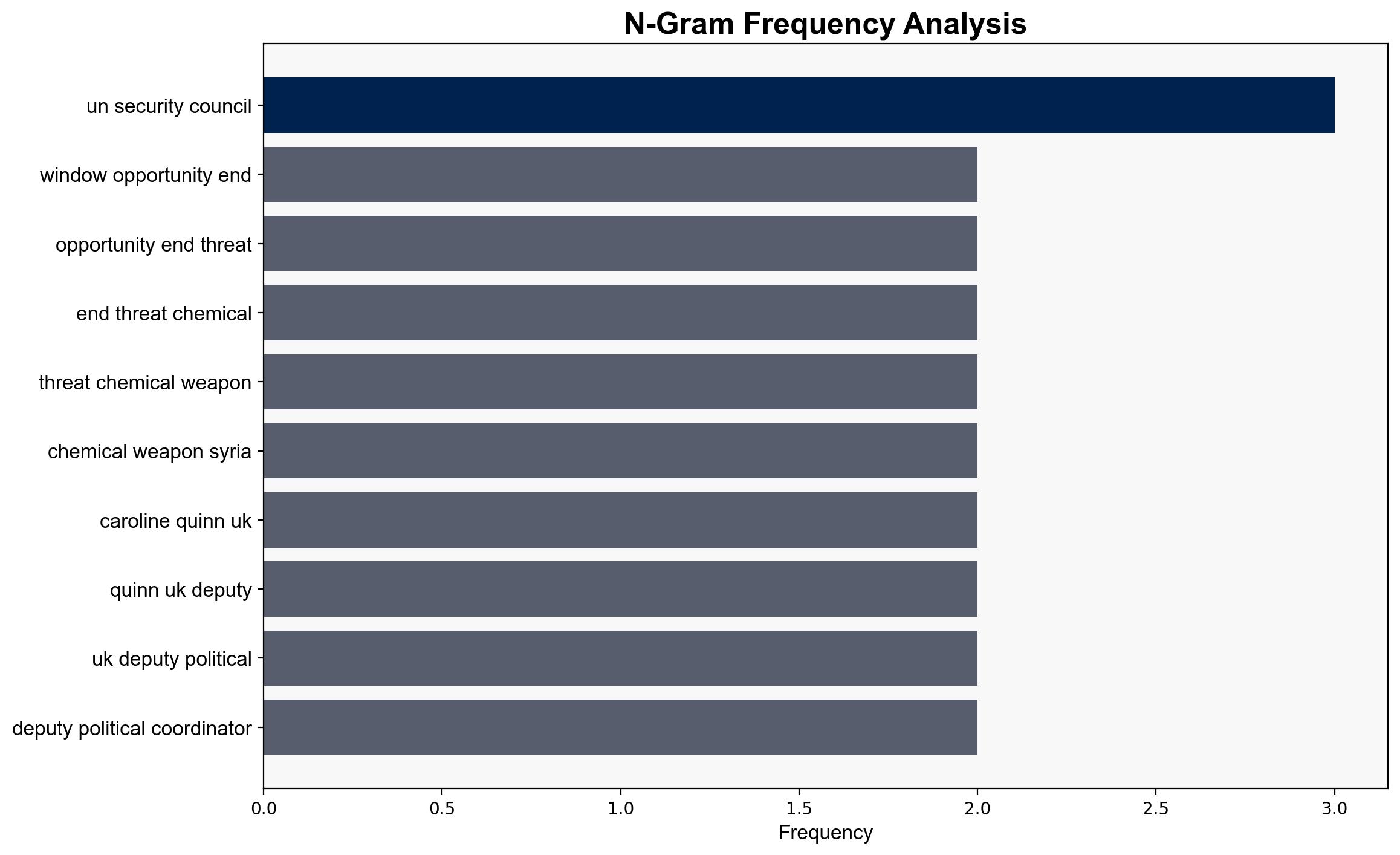This is a window of opportunity to end the threat of chemical weapons in Syria UK Statement at the UN Security Council – Globalsecurity.org
Published on: 2025-09-13
Intelligence Report: This is a window of opportunity to end the threat of chemical weapons in Syria UK Statement at the UN Security Council – Globalsecurity.org
1. BLUF (Bottom Line Up Front)
The strategic judgment is that there is a moderate opportunity to significantly reduce the threat of chemical weapons in Syria, contingent on international cooperation and the compliance of the Syrian government. The most supported hypothesis is that the Syrian government is currently willing to engage with international bodies to dismantle its chemical weapons program, though this may be influenced by external pressures. Recommended action includes bolstering international support for the Organisation for the Prohibition of Chemical Weapons (OPCW) and ensuring robust verification mechanisms. Confidence level: Moderate.
2. Competing Hypotheses
1. **Hypothesis A**: The Syrian government is genuinely committed to dismantling its chemical weapons program and is cooperating with international bodies to ensure compliance with the Chemical Weapons Convention.
– **Supporting Evidence**: Recent deployment of the OPCW in Syria, Syrian government’s stated commitments, and the UK’s support for OPCW efforts.
– **Contradictory Evidence**: Historical obstruction and denial by the Assad regime.
2. **Hypothesis B**: The Syrian government’s cooperation is a strategic maneuver to alleviate international pressure while maintaining some level of chemical weapons capability.
– **Supporting Evidence**: Past behavior of the Assad regime, potential geopolitical advantages of retaining chemical weapons.
– **Contradictory Evidence**: International pressure and the presence of OPCW inspectors.
Structured Analytic Technique: ACH 2.0 was used to weigh evidence for each hypothesis. Hypothesis A is slightly better supported due to recent cooperative actions, but historical patterns suggest caution.
3. Key Assumptions and Red Flags
– **Assumptions**: It is assumed that the Syrian government’s recent actions indicate a shift in policy. The international community’s ability to enforce compliance is also assumed.
– **Red Flags**: The potential for deception by the Syrian government, given its history of non-compliance. The risk of geopolitical manipulation by external actors, such as Israel’s military actions, which could destabilize the situation.
– **Blind Spots**: Lack of detailed intelligence on the internal decision-making processes of the Syrian government and potential undisclosed chemical weapon sites.
4. Implications and Strategic Risks
– **Geopolitical**: Continued instability in Syria could lead to regional destabilization. Israeli military actions may provoke further conflict.
– **Economic**: Prolonged conflict could disrupt regional trade routes and economic recovery efforts.
– **Psychological**: The Syrian population may experience increased fear and uncertainty, potentially leading to further displacement.
– **Cascading Threats**: Failure to dismantle chemical weapons could embolden other regional actors to pursue similar capabilities.
5. Recommendations and Outlook
- Enhance international support for OPCW operations in Syria, including technical and financial assistance.
- Implement robust verification and monitoring mechanisms to ensure compliance by the Syrian government.
- Engage with regional actors to de-escalate tensions and prevent interference with OPCW operations.
- Scenario Projections:
- Best Case: Full dismantlement of chemical weapons and stabilization of the region.
- Worst Case: Continued obstruction by Syria, leading to regional conflict escalation.
- Most Likely: Partial compliance with ongoing international oversight and pressure.
6. Key Individuals and Entities
– Caroline Quinn
– Al Shaibani
– Organisation for the Prohibition of Chemical Weapons (OPCW)
7. Thematic Tags
national security threats, chemical weapons, international cooperation, regional stability




